What does the rump look like and how to grow it?
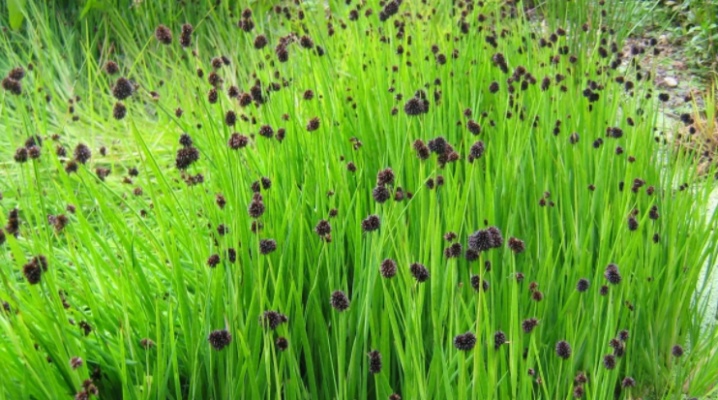
Sitnik is a very interesting culture. Spreading and spiral, filamentous and other plant species deserve attention. Caring for a flower at home is no less significant than its description.
Description
The rump, called in Latin Juncus effusus (junkus), is an impressive genus of the rump family, which is typical of this family. It is established that the earliest Latin name for the culture appeared already from Virgil and, most likely, was borrowed from him by other Roman authors. This word comes from a verb with the meaning "to connect, weave", which indicates the main use of the sitnik in ancient times.
Mainly this deciduous plant inhabits the Northern Hemisphere. You can see it in damp places - both in the tundra and in tropical regions.

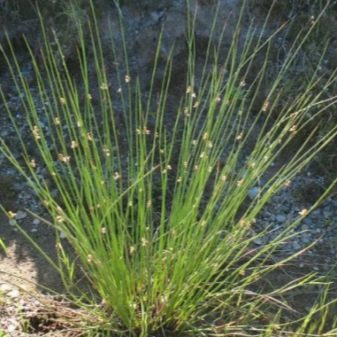
Several dozen species are known in this genus of plants. He, together with the family, is included in the order of cereals, in which there are such well-known varieties as:
-
wheat;
-
a pineapple;
-
corn;
-
oats;
-
barley;
-
rye;
-
sugarcane;
-
reed;
-
bamboo;
-
feather grass.

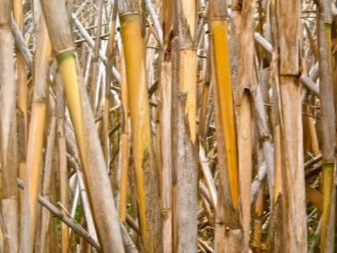
But in the genus and family itself there are no known plants. The entire genus of rhizome is predominantly perennial, giving pronounced rhizomes, occasionally there are annual herbaceous species. The foliage of the rump can be both with ears and without them. She forms either flat (like in cereals) or in the form of a cylinder (stem-like) leaf plates. Sometimes they are tubular, cross-cloisonne format.
For the rump, the appearance of bisexual flowers is typical, painted in weak brown or greenish tones. They are grouped into inflorescences of various types, invariably found on branches. The grouping of the inflorescences themselves is uncharacteristic. Their bases have a pair of bracts. In some cases, the inflorescences are collected in heads, around which a ring of bracts is placed.
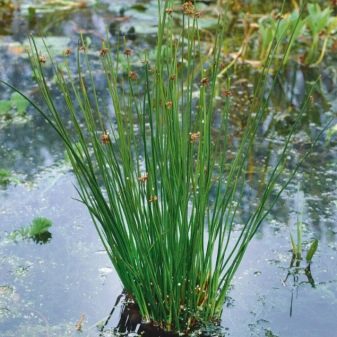
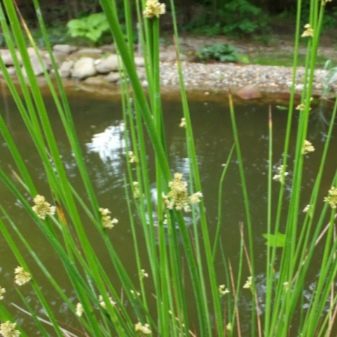
In the perianths, thin leathery, sometimes membranous foliage develops. A filmy border is noted at the edges of the leaves. The ovaries have 1 or 3 sockets. The fruit is a capsule with 3 nests. There are quite a lot of seeds in the rump, they are both elongated and oval in shape.
The name of the genus was given by the legendary Karl Linnaeus, who described it in 1753. However, then botanists paid little attention to it. Suffice it to say that the type species of this genus was determined only in 1913. For a long time, they wrote that this is "an unclear and uninteresting genus." Later, researchers found that it appeared at least in the middle of the Miocene.
Sitnik has spread far beyond the original range. It is found on any continent except Antarctica. In the tropics, such a plant gravitates mainly to mountainous regions. Flowers are odorless and do not emit nectar. The rush growing in reservoirs helps to purify their water from toxic substances.
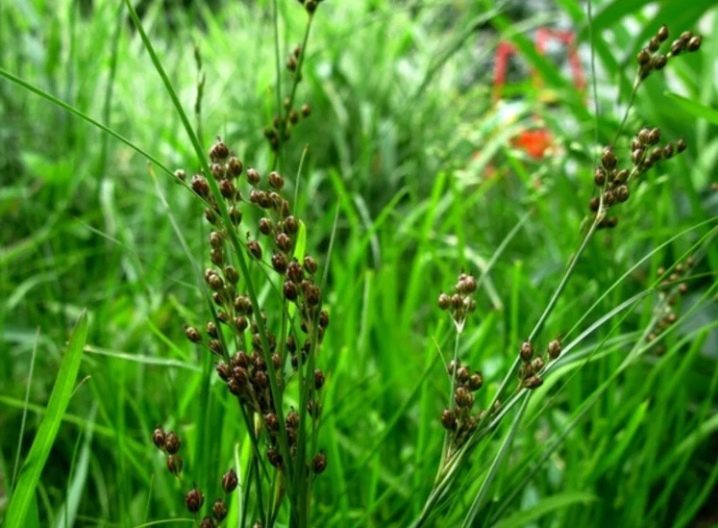
Popular types
When they talk about spiral and spreading rushes, they mean one plant. It is found very widely, grouping in damp places, both next to ordinary water bodies and in marshy areas. These are typical bushes, on which many thin shoots from 40 to 120 cm long develop. Paniculate inflorescences are a characteristic feature of the plant. They group medium-sized flowers, painted in beige or gray-white color.
The inflorescences themselves are rather loose. The stems grow straight up. The boxes are brown or light yellow.Such a rump is found not only in Eurasia, but also on the North American continent, in Madagascar, in an imported state - in New Zealand. Breeders have bred several varieties.
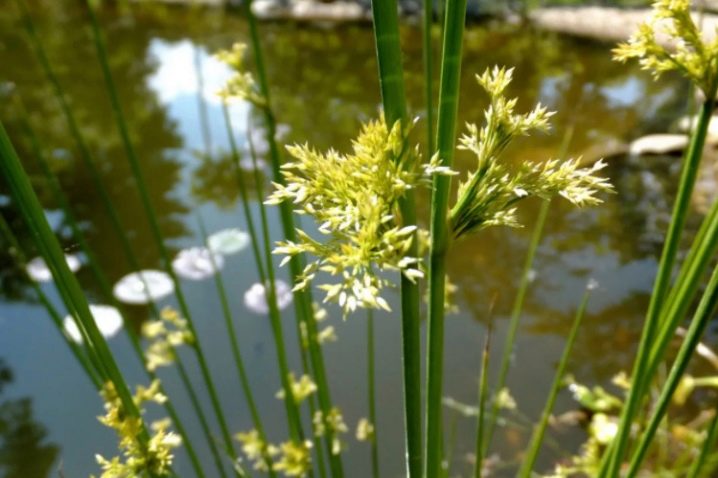
Blonde ambition produces both straight and curled stems, colored in a straw tone. Spiralis produces a lush-looking turf 25-40 cm high. As the name suggests, they are also wrapped in a spiral. It is this version of junkus that is especially demanded by flower growers. And also it is worth taking a closer look at the varieties:
-
Aureostriata;
-
Pensioned Grass;
-
Golden line.

A curved rump is able to create a dense, dense turf. It is composed of thin, pale green shoots. In nature, this species inhabited Asia Minor, Iran, the Caucasus. In the middle lane, such a plant takes root relatively well. Sitnik slender is a wild North American type; lives in Russia stably, but does not give a lush flowering.
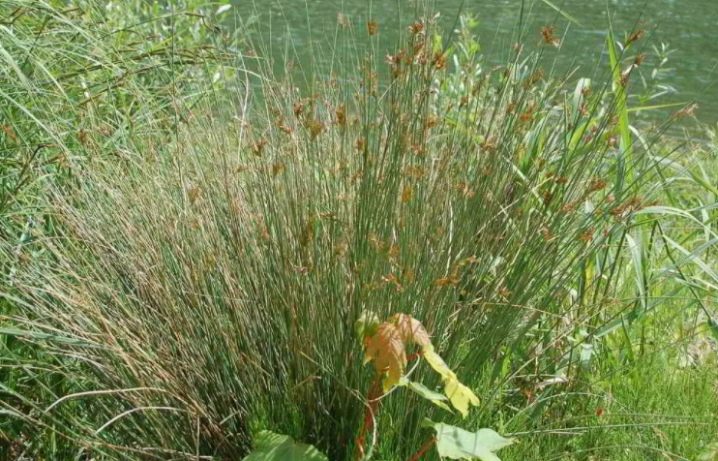
Swordweed is also an American plant. Its flat leaves are up to 0.5 cm wide. Dense inflorescences have a cross section of up to 1 cm. When frosts come in autumn, these inflorescences will retain their grace, despite the degradation of the leaves. In snowless years, freezing cannot be ruled out.
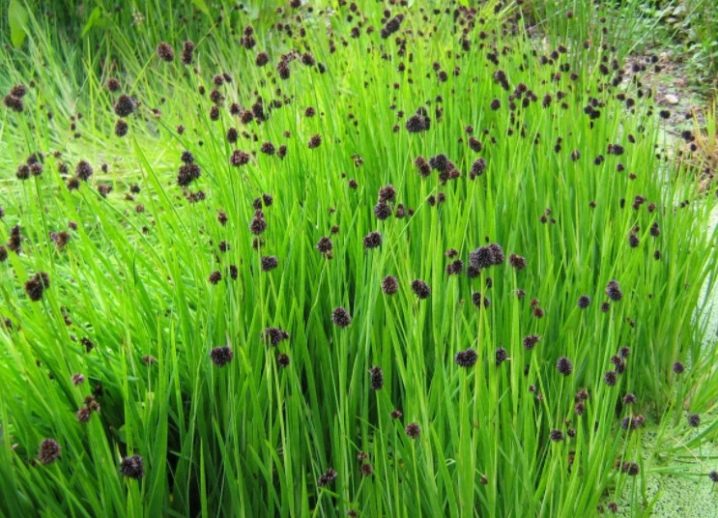
As for the filamentous rush, it grows up to 10-60 cm in height. The creeping rhizome grows rapidly. The stems are always thin and straight. The leaves are not wide, closer to the base of the shoot they resemble rather scales. Paniculate inflorescences can be dense or loose; a thriving bush can produce self-seeding.
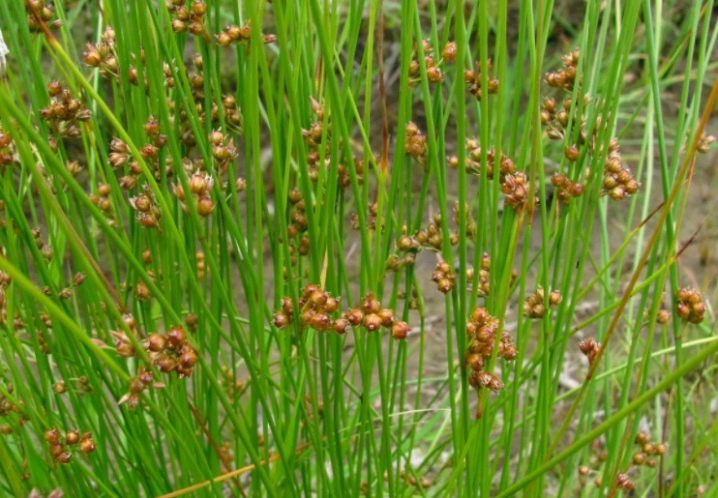
Landing
In culture, as in the wild, slightly marshy land is preferable for the rump. Since the seeds are very small, they will have to be granulated. Sowing for seedlings is done in January, February, sometimes in March. The granules are pressed into slightly compacted moist soil. Seedlings are germinated under glass or polyethylene at 18-20 degrees.
Up to the emergence of sprouts, the moisture content of the substrate is critical. As soon as the first real sheet appears, the cover can be removed. At the same time, the temperature is lowered to 14-16 degrees. The pick is carried out in the phase of 3-4 leaves. The open ground transplant should take place in the first third of the summer.
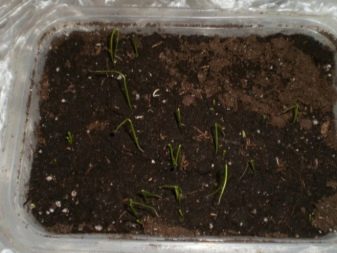
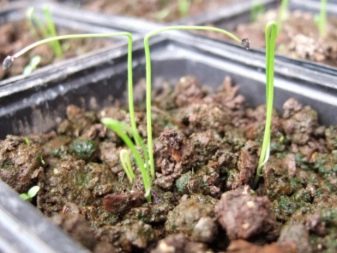
Basically, the rump is cultivated as an ornamental plant. They are used to decorate large gardens and home gardens. It looks especially good on flower beds next to a pond. The use of this plant as forage is unlikely. The maximum is bad hay.
With this culture, landscape designers create contemporary accents. Juncus replaces the usual garden decor and outdoor sculptures. It can be kept both in the greenhouse and in the bathroom, as long as there are suitable conditions.
It is also a great visual space divider. Using the sitnik, you can achieve unique optical illusions, but this art is available only to professionals.

Care
Watering
When growing junkus at home, as well as when cultivating in an open field, moisture should be as abundant as possible. Water is poured into the trays of the pots in a layer up to 10 cm. In any case, it must overlap the drainage layer. If there is no pallet, active systematic irrigation will still be required. Even a weak drying of the substrate affects the plant very badly.
It is advisable to use soft water, which is pre-defended. Ideally, it is at the same temperature as the indoor air. When growing hydroponically or in a self-irrigated pot, you just need to add water to the tank more often. Systematic humidification and spraying is required if the total humidity drops below 50%, especially when heating devices are operating at the same time.
It is necessary to spray not along the stems, but from a height and with some distance from the spray gun; Normally, the rump itself becomes an air humidifier.
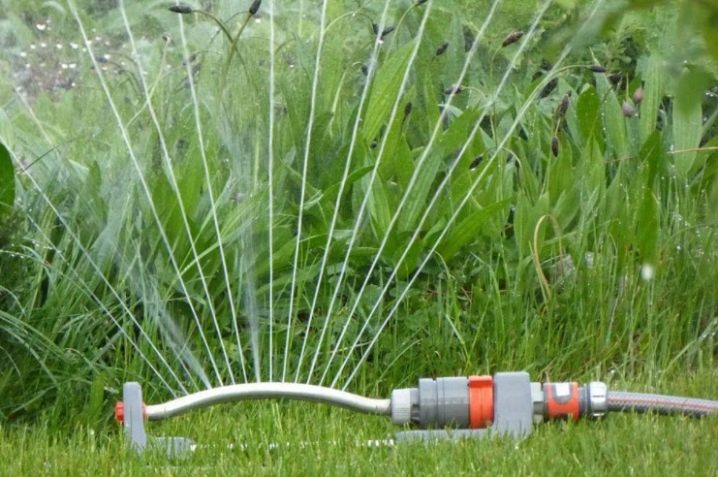
Top dressing
You need to apply fertilizer for indoor flowers twice a week.In this case, complex compositions on a mineral basis are used. Any preparation for deciduous ornamental crops is suitable. Refusal to feed will not allow maintaining a fresh look of the plant and providing its beautiful colors.
Special dressings, like universal preparations, can be used even in winter if the growing season has not stopped, but this must be done in half doses.
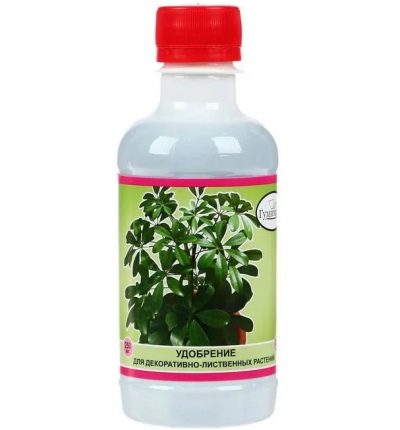
Transfer
This procedure is usually done in the spring. All dried and deformed roots will have to be removed. It will be necessary to transplant the rump in the garden annually. It fills the surrounding space too quickly to be ignored.
Excessive tightness usually manifests itself in mass drying and death of shoots.
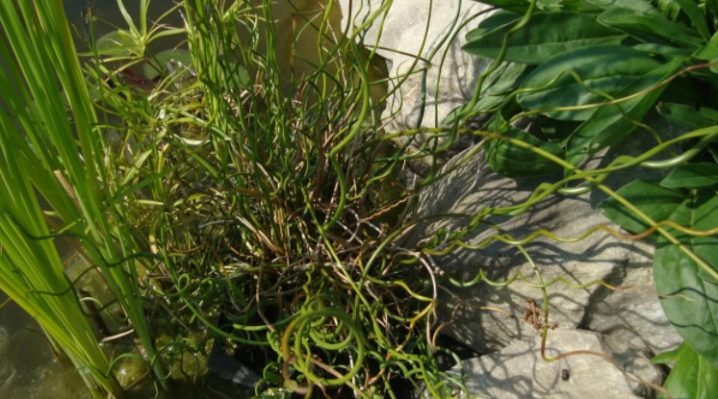
It is not difficult to properly care for junkus. It is necessary to take into account, in addition to the ones described above, a few more subtleties. Illumination is critical for this plant. It is necessary to pay attention to the characteristics of a particular variety - some of them are specially adapted for life in partial shade. It is important to supplement light-loving specimens.
Normally, the room should be 24 degrees and above. At 18 degrees or less, the sitnik already feels uncomfortable. Against the background of a sharp drop in temperature, the plant enters a dormant phase. Such dormancy is beneficial for a mature plant, but it should be short-lived. It is better not to hibernate young shoots at all.
Temperature changes, even if it is generally kept normal, are unacceptable. Drafts also have a bad effect on junkus. In the cold season, the plant can be kept on glazed balconies. You can move the pots to the terrace or garden only after the onset of confident warmth. Air humidity is maintained by finely dispersed spraying, carefully avoiding drops on the foliage; in this case, only warm water is used.

Reproduction
For breeding the rush, they often resort to dividing the bush. This should be done in the spring. On any plot, at least 10 stems and a solid bunch of roots are left. For planting the material used, pots are used, which are filled with moistened soil. The containers need direct sunlight before germination, but as soon as they appear, the pots must be removed in the shade.
Seed breeding, as already mentioned, is carried out in January - March. Watering before the emergence of young shoots and the first time after that should be done with a spray bottle. Using a watering can and other similar methods can cause great harm to the plantings. Young shoots should be protected from too bright sunlight.
Pruning is not required in most cases for junkus. But in spiral specimens, direct shoots must be removed. To maintain decorativeness, it will be necessary to similarly eliminate green growth in variegated varieties.
All dried and mechanically damaged branches must also be disposed of. The same goes for dry ends of shoots that have suffered from insufficient watering.
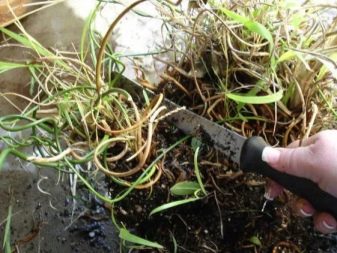
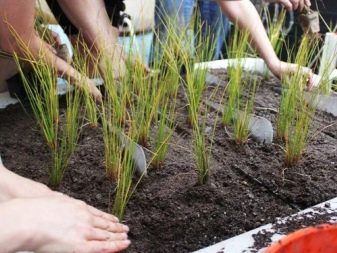
Diseases and pests
Sitnik has an unusually powerful immune system. It is not affected by both pathogens and insect pests. Only occasionally do standard fungicides have to be used in accordance with the instructions. Too low air humidity, temperature drop and excessive shading are much more harmful. Insecticides and fungicides are used once if necessary.
Spider mites sometimes attack spider mites. You can't see it without a magnifying glass. However, you can always see specific punctures and other deformations. Other signs of damage are a whitish surface, twisting of foliage, acquiring a faded sluggish appearance, as well as the appearance of stripes and spots of a silvery color. Spider mites actively develop in dry air and elevated temperatures.
To combat it, a number of relatively gentle drugs have been developed. Akarin and Flumite are considered good options among them. However, sometimes gardeners use natural improvised means. You can infuse alder leaves or dandelion roots. The liquids that have settled during the day must be filtered, and then, after watering, spray the plant itself with them.

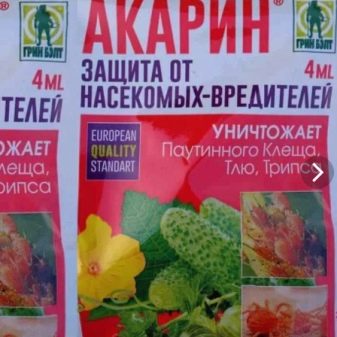













The comment was sent successfully.